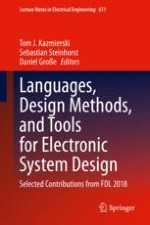This book brings together a selection of the best papers from the twenty-first edition of the Forum on specification and Design Languages Conference (FDL), which took place on September 10-12, 2018, in Munich, Germany. FDL is a well-established international forum devoted to dissemination of research results, practical experiences and new ideas in the application of specification, design and verification languages to the design, modeling and verification of integrated circuits, complex hardware/software embedded systems, and mixed-technology systems.
Covers Assertion Based Design, Verification & Debug;Includes language-based modeling and design techniques for embedded systems;Covers design, modeling and verification of mixed physical domain and mixed signal systems that include significant analog parts in electrical and non-electrical domains;Includes formal and semi-formal system level design methods for complex embedded systems based on the Unified Modelling Language (UML) and Model Driven Engineering (MDE).
